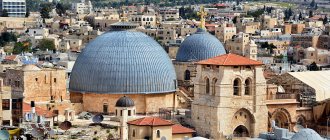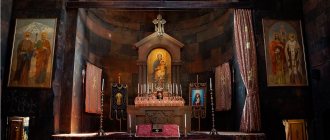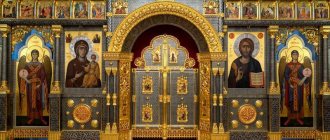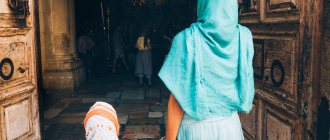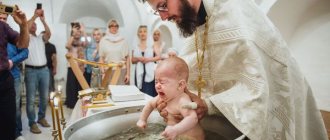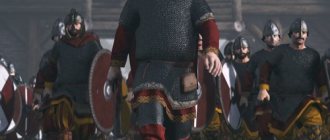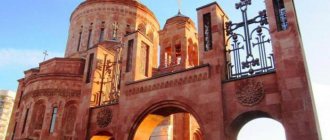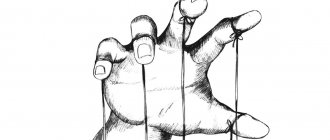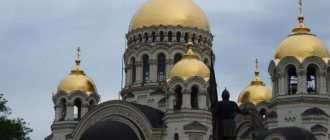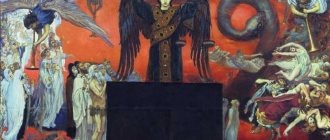Anyone who has ever been to an Orthodox church has seen double doors opposite the Throne, leading to the altar and symbolizing the gates of Paradise. This is the Royal Doors. They represent a kind of heritage preserved from early Christian times, when the altar was separated from the rest of the temple by two columns, or a low barrier. After the church schism, the barrier was preserved only in some Catholic churches, while in Orthodox churches it was modified and turned into an iconostasis.
Icons on the Gates of Heaven
The royal doors in the temple are decorated with icons, the selection of which is regulated by established tradition. Usually these are images of the four evangelists and the Annunciation scene. The symbolic meaning of this combination is quite obvious - Archangel Michael, with his Good News, announces that the doors of Paradise are open again, and the Holy Gospel shows the path leading to it. However, this is just a tradition, and not a law that requires strict adherence.
Sometimes the Royal Doors are decorated differently, and if they are low doors, they often do not have any icons at all. Also, due to the tradition that has developed in Orthodox churches, an icon of the Most Holy Theotokos is placed to the left of the royal doors, and on the opposite side - the Savior, followed by an icon of the saint or holiday in whose honor the temple was consecrated.
Decorations placed on the Royal Doors of the side chapels and above them
If the temple is large enough, and in addition to the main altar, it has two more chapels, then often the gates of one of them are decorated only with a full-length image of the Annunciation, and the other with the four evangelists. But the size of one or another royal gate of the iconostasis in the church does not always allow this. Evangelists in this case can be depicted as symbols. People close to the church know that the symbol of the Evangelist Matthew is an angel, Luke is a calf, Mark is a lion and John is an eagle.
Church tradition also determines the images located above the Royal Doors. In most cases, this is the scene of the “Last Supper,” but often the “Communion of the Apostles by Jesus Christ” is also found, which is called the Eucharist, as well as the Old Testament or New Testament Trinity decorating the Royal Doors. Photos of these design options can be seen in this article.
Features of the manufacture and design of the Royal Doors
At all times, wide creative possibilities opened up for the architects who created them. In addition to the appearance, design and design, the result of the work largely depended on what the Royal Doors were made of. When visiting temples, you can see that a variety of materials were used to make them, such as wood, iron, porcelain, marble and even ordinary stone. Sometimes the preference given to one of them was determined by the artistic intention of the author, and sometimes by the availability of one or another material.
The Royal Doors are the entrance to Paradise. They are usually the most decorated part of the iconostasis. To decorate them, various types of carving and gilding can be used, often featuring images of bunches of grapes and paradise animals. There are also the Royal Doors, designed in the form of the Heavenly City of Jerusalem. In this case, all icons are placed in reliquaries-temples, crowned with domes with crosses. There are many design options, but in all cases the gates are located strictly in the middle of the iconostasis, and behind them is the throne, and even further away is the high place.
Design features and symbolism
The Royal Doors mark the gates of Heaven. Therefore, they usually become the most lavishly decorated part of the iconostasis.
evangelists are usually placed on the Royal Doors
- the apostles who wrote the Gospels. All of them are usually depicted with scrolls or books - their works. This emphasizes that the Word of God, brought to people through the preaching of the Gospel, has become the gates of salvation for us.
Also on the Royal Doors you can usually see the image of the Annunciation. He recalls that the consent of the Most Pure Virgin to become the Mother of God became “the main principle (beginning) of our salvation”: the Redeemer, the God-man Christ,
.
In Byzantium and Ancient Russia, the Old Testament Moses and Aaron
, as well as Saints
Basil the Great
and
John Chrysostom
- that is, the founders of Old and New Testament worship.
origin of name
They received their name from the fact that, according to religious doctrine, during Holy Communion it is through them that the King of Glory Jesus Christ invisibly comes out to the laity. However, this name exists only in Russian Orthodoxy; in Greek churches they are called “Saints”. In addition, the name “Royal Doors” also has deep historical roots.
In the 4th century, when Christianity became the state religion and came out of hiding, by order of the emperors, services in Roman cities were transferred from private homes to basilicas, which were the largest public buildings. They usually housed courts and trading exchanges.
Since only the emperor and the head of the community, the bishop, had the privilege to enter through the main entrance, these gates received the name “Royal”. Only these persons, being the most honorable participants in the prayer service, had the right to solemnly proceed through them into the room. For everyone else there were side doors. Over time, when altars were formed in Orthodox churches, this name was transferred to the double door leading into them.
Formation of the altar in its modern form
As the results of research indicate, the formation of the altar part of churches in the form in which it exists now was a very long process. It is known that at first it was separated from the main room only by low partitions, and later by curtains called “katapetasma”. This name has remained with them to this day.
At certain moments of the service, for example, during the consecration of the Gifts, the curtains were closed, although they often did without them. In general, in documents dating back to the first millennium, mentions of them are quite rare, and only much later did they become an integral part of the Royal Doors, they began to be decorated with images of the Virgin Mary and various saints.
A funny episode related to the use of a veil can be found in the life of Basil the Great, who lived in the 4th century. It says that the saint was forced to introduce this attribute, which he had not used before, only because his deacon constantly looked at the women present in the church, which clearly violated the solemnity of the service.
Manufacturing options
As a rule, the Royal Doors are high enough to hide what is happening in the altar from the eyes of people in the temple. This corresponds to the tradition, which, according to legend, was introduced by St. Basil the Great
in the 4th century A.D.
Nowadays, churches are increasingly making low
iconostases
or iconostases with the Royal Doors so low that through them you can clearly see the Holy of Holies. Supporters of such church decoration refer to the experience of the early Christian Church and believe that by seeing what is happening in the altar, believers will be able to more fully participate in the divine service. Their opponents fear the loss of reverence and the desacralization of the Sacraments in the minds of the laity.
The symbolic meaning of the Royal Doors
But the Royal Doors in the church, photos of which are presented in the article, are not an ordinary element of the interior layout. Since the altar behind them symbolizes Paradise, their semantic load lies in the fact that they represent the entrance to it. In Orthodox worship this meaning is fully reflected.
For example, at Vespers and the All-Night Vigil, at the moment when the Royal Doors open, the light in the temple is lit, which symbolizes its filling with heavenly light. All those present at this time make a bow. They do the same in other services. In addition, in the Orthodox tradition, when passing by the Royal Doors, it is customary to make the sign of the cross and bow. During the entire Easter week - Bright Week - the Royal Doors in the temple (photo at the end of the article) are not closed, since Jesus Christ, with his suffering on the cross, death and subsequent resurrection, opened the doors of Paradise to us.
Royal Doors
- Questions and answers to explain church piety and spiritual care
- Test: Construction of an Orthodox church
***
The Royal Doors are the gates located in the middle of the iconostasis. They are called so because through them, during the liturgy, the Holy Gifts are brought out - the Lord himself, the King of Glory, comes out to the believers.
The iconostasis has three gates. The central, largest, are called the Royal Doors. They are called royal because they symbolize the entrance to the Kingdom of God, the gates of heaven. In worship, the opening of the Royal Doors symbolizes the opening of the Heavenly Kingdom.
The Kingdom of God is revealed to us through the Good News, therefore the Annunciation theme is depicted twice on the Royal Doors: the scene of the Annunciation with the Virgin Mary and the Archangel Gabriel, as well as the four evangelists preaching the gospel to the world.
Once upon a time, to the liturgical exclamation “Doors, doors!” the ministers closed the outer doors of the temple, and they bore the name Royal, for all believers are the royal priesthood, but now the doors of the altar are closed. The Royal Doors are also closed during the Eucharistic Prayer, so that those who thank the Lord for His atoning sacrifice are, as it were, on opposite sides of the altar barrier. But in order to connect those who stand outside the altar and what happens in the altar, the icon “The Last Supper” (or “Communion of the Apostles”) is placed above the Royal Doors. Sometimes images of the creators of the liturgy of Sts. are placed on the doors of the Royal Doors. Basil the Great and John Chrysostom.
To the right of the Royal Doors is an icon of the Savior, where He is depicted with a Book and a blessing gesture. On the left is an icon of the Mother of God (usually holding the Baby Jesus in her arms). Christ and the Mother of God meet us at the gates of the Kingdom of Heaven and lead us to salvation throughout our entire lives. The Lord said about Himself: “I am the way, the truth and the life; no one comes to the Father except through Me” (John 14:6); “I am the door of the sheep” (John 10:7). The Mother of God is called Hodegetria, which means “guide” (usually the iconographic version of the Mother of God Hodegetria is placed here).
The icon following the image of the Savior (to the right in relation to the ones ahead) depicts the saint or holiday in honor of which the temple is named. If you entered an unfamiliar temple, it is enough to look at the second icon to the right of the Royal Doors to determine which temple you are in - in the St. Nicholas Church there will be an image of St. Nicholas of Myra, in Trinity - the icon of the Holy Trinity, in Assumption - the Assumption of the Blessed Virgin Mary, in the Church of Cosmas and Damian - the image of Sts. unmercenary, etc.
In addition to the Royal Doors, in the bottom row there are also southern and northern doors (also called deacon doors, because it is the deacon who uses them more often than others during the divine service). As a rule, they are much smaller in size and lead to the side parts of the altar - the altar, where Proskomedia is celebrated, and the deacon or sacristy, where the priest vests before the liturgy and where vestments and utensils are stored. On the deacon's doors they usually depict either archangels, symbolizing the angelic service of the clergy, or the first martyrs of the archdeacons Stephen and Lawrence, who showed a true example of serving the Lord.
A curtain (Greek καταπέτασμα - katapetasma) is hung from inside the Royal Doors, which is opened or closed at certain moments of the service.
The Royal Doors are opened only during divine services and only at certain moments. During Bright (Easter) Week they do not close for a whole week as a sign that Jesus Christ has opened the gates of the Heavenly Kingdom for us.
The Royal Doors open during the Liturgy:
- for the Small Entrance with the Gospel, which marks the appearance of the Lord to preach the Gospel, and after reading the Gospel they close;
- for the Great Entrance, at which the Holy Gifts are transferred from the altar to the throne and then closed, which signifies the Savior’s descent into hell;
- during the presentation of the Holy Gifts for the communion of the people, which depicts the appearance of the Lord to His disciples after the resurrection, the ascension to heaven and the Opening of the Kingdom of Heaven.
Only clergy are allowed to pass through the royal doors.
Some church rules concerning this topic
According to the established rules, only clergy are allowed to enter the royal doors of the iconostasis in the church and only during divine services. In normal times, they are required to use the so-called deacon doors, located in the northern and southern parts of the iconostasis.
When the bishop's service is performed, only subdeacons or sextons open and close the Royal Doors, but they are not allowed to stand in front of the Throne, and upon entering the altar, they take places on the sides of it. The bishop also has the exclusive right to enter the altar without wearing vestments outside of divine services.
Liturgical purpose of the Royal Doors
During the liturgy, the Royal Doors play a very important role. It is enough to mention the Small Entrance, when the Gospel taken from the Throne is brought in through the Deacon's Gate and taken back to the altar through the Royal Gate. This action has a deep dogmatic meaning. On the one hand, it symbolizes the Incarnation of God, as a result of which the world found the Savior, and on the other, the beginning of the public ministry of Jesus Christ.
The next time a procession of clergy passes through them is during the Great Entrance, accompanied by the singing of the Cherubic Song. The laity present in the church is given a Chalice of wine – the future blood of Christ. In addition, in the hands of the priest there is a paten (platter) on which is the Lamb - the bread that will become incarnate into the Body of Christ.
The most common interpretation of this rite is that the procession symbolizes the carrying of Christ, taken down from the cross and dead, as well as his position in the tomb. The continuation of the Great Entrance is the reading of the Eucharistic prayers, after which the Gifts will become the Blood and Body of Christ. For the communion of the laity, they are also taken out through the Royal Doors. The meaning of the Eucharist is precisely that the Savior is resurrected in the Holy Gifts, and those who partake of them become heirs of Eternal Life.
The Royal Doors as an important symbol in Christianity
In the process of the development of Christianity, the church community grew so large that it gradually began to divide into smaller components - parishes, in whose churches services were conducted by priests without the participation of a bishop. Because of this, at the beginning of the 9th century, the very process of the bishop’s entry into the church as a whole, and into the altar itself, was filled with new rituals and meaning, receiving the name “Small Entrance” (another option is entry with the Gospel).
The Gospel is given special significance, since during the birth of Christianity this book had to be carefully hidden and solemnly brought out during the service. After the need to hide the book disappeared, they began to keep it on the Throne and bring it in through the deacon's gates, and then take it out through the Royal Gates.
Important element
Also through the Royal Doors is the Great Entrance, during which a group of priests brings out the Chalice with the Blood of Christ (wine) and the Paten (Body of Christ) while the Cherubic Song is performed. This tradition can be traced from the end of the 4th century as a symbol of the carrying of the deceased Body of Christ, followed by laying it in a coffin and subsequent resurrection, in the interpretation of the Byzantines - as a meeting of Christ as a King accompanied by Angels.
